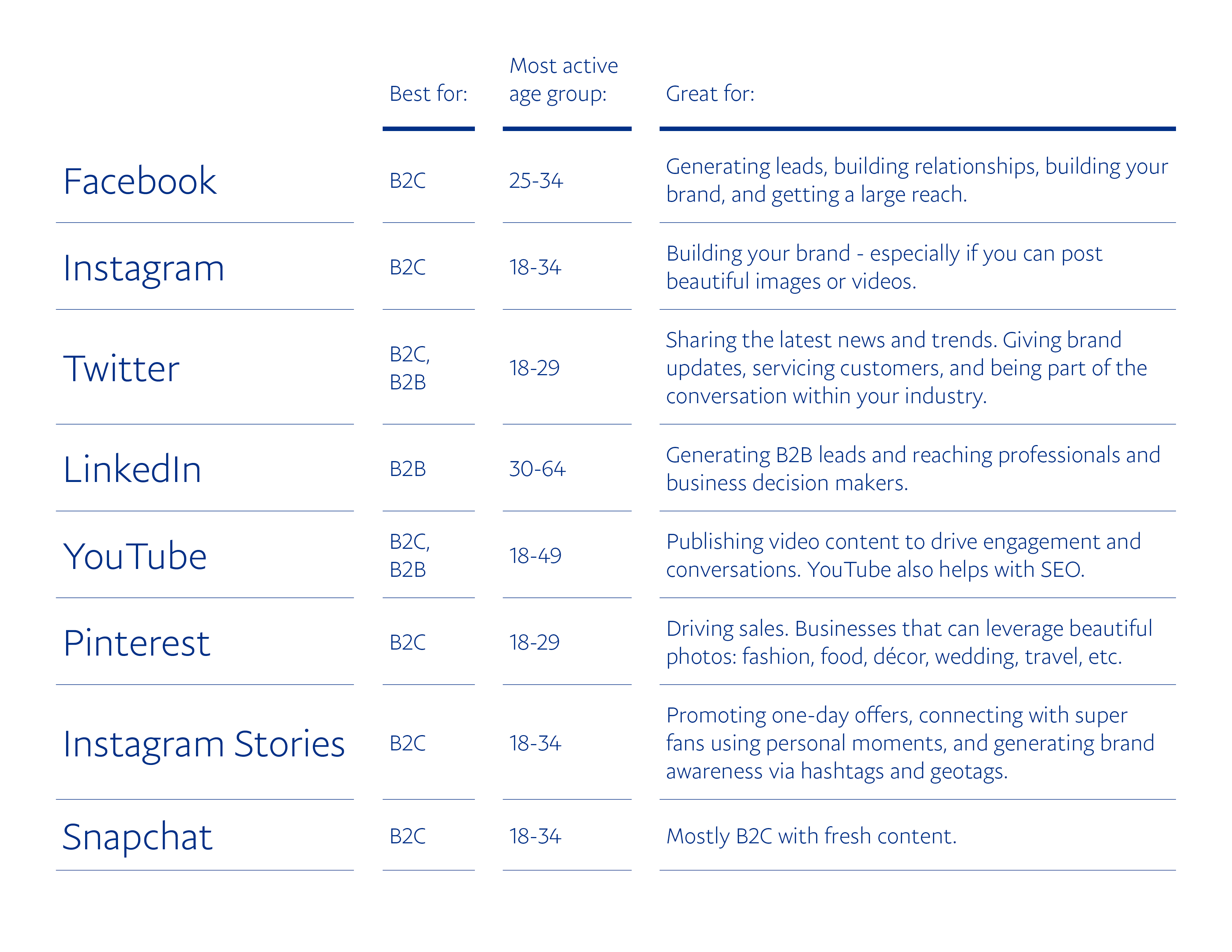7 tips to jumpstart your social strategy.
A good first step is to review what worked for you last year. Ask:
- Which social media platforms delivered the most traffic to your website?
- Which posts saw the highest engagement and clicks? Did you see more shares and likes with posts that featured a video or a photo? And as for content appeal - did customers click on product promotion posts, or general brand awareness posts more?
- What posting days and times did you see the most engagement and sales?
- What posting frequency delivered the best results? Once a day or once a week?
2. Define your goals and Key Performance Indicators (KPIs).
Ask yourself: what do you want your customers to do and how can social media help? Do you want to generate leads, drive sales, or increase brand awareness? Your goal will help determine how you'll measure success and what your KPIs are.
If you're looking to generate leads, you might want to design a social media campaign that entices customers to share their email address. If you want to generate sales, you can design a campaign that includes special offers or flexible payment options. And if better brand awareness is your goal, focus your efforts on tracking impressions, clicks, and engagements with your content.
3. Choose your channel (or channels).
There are many social media platforms out there, but it doesn't mean you should be on all of them. It's better to focus on just a few and to make sure they're the right platforms for your type of business. Personally, I think Facebook is a great channel for small businesses because of its large user base and flexibility to target a variety of customers.
Start testing with a few hundred dollars to see what kind of traction you're getting. Add more or scale back until you get closer to meeting your KPIs. You may also experiment with your posting frequency on different channels. For example, your customers may like seeing multiple posts on Instagram or Twitter, where they check in multiple times a day, but not as many on Facebook, where they might only check in once a day. Your business's ideal posting frequency will be unique to your customers, so be sure to monitor how it impacts results.

4. Know your audience.
Getting to know your customers is critical for understanding how and where to reach them to meet your goals. A good place to start: develop a customer persona or a profile of people who use your products or services. This persona can include information like age, gender, occupation, location, hobbies and habits. With this in mind, you can begin to find where these types of customers spend time on social media, who influences their decisions, and what information helps them make purchasing decisions.As you learn more about your audience, you'll begin to understand what kinds of content appeals most to them. For example, does content that builds awareness perform better than content designed to push sales? You may find that a mix of content works best, so experiment. Develop content that tells your story or provides advice or inspiration, then develop content that showcases specific products or promotions. Combined, you'll be able to position your business as a trusted resource your customers will want to follow long after their first interaction.
5. Think outside the desktop.
Mobile social media and search play a big role in influencing customer decision-making and more consumers are turning to their phones to purchase items. In fact, a study from MiQ suggests that 2019 will see 94% of Canadian shoppers will use their smartphones or tablets when making a shopping decision, and 41% plan to use a mobile device to make a purchase.*
So, remember to include mobile in your social marketing strategy and to ensure your website and emails are optimized to be easily read and navigated by mobile customers.
As a small business owner, it's sometimes easy to view social media as another communications channel for you, but remember it's a two-way channel and an efficient way to gain insights about both customers and competitors. It can also be a useful customer service tool, allowing you to find out about potential issues early.
Monitor conversations on your social channels and your competitors' social channels. What issues may be causing frustration or joy? What information or keywords do you hear most often? Use what you learn to help inform your own messaging and marketing.
7. Target, test, and learn.
Testing will also help you to create social ads and messaging that are most relevant to drive results. Each social platform has its own "native" advertising offering, meaning you can set up promotional campaigns directly from your own account - from targeting and messaging to budget and reporting. You can target audience segments with different types of content - like videos or photos - or different messaging - like free shipping or other special offers. From there, invest in those placements that deliver the best results according to your KPIs.
About PayPal for small businesses.
For nearly 20 years, PayPal is proud to be a partner and platform for over 21 million merchants as they launch, scale and grow. Learn how our payment solutions can also help your business.
*2019 Holiday Shopping Study, MiQ,
We’ll use cookies to improve and customize your experience if you continue to browse. Is it OK if we also use cookies to show you personalized ads? Learn more and manage your cookies